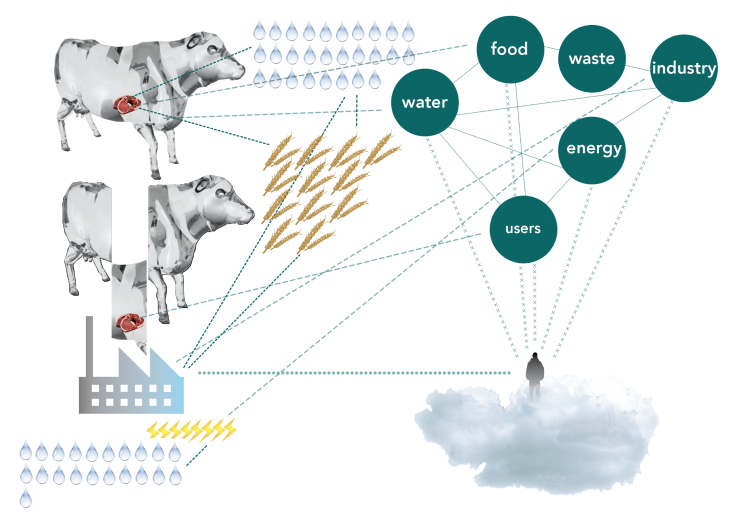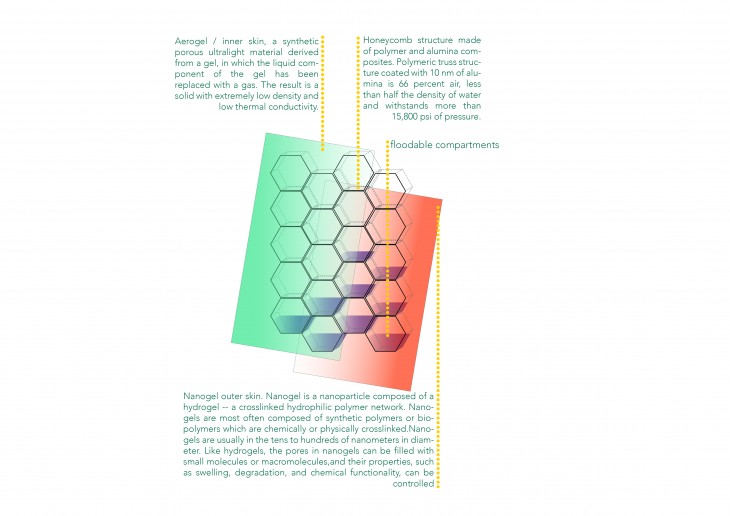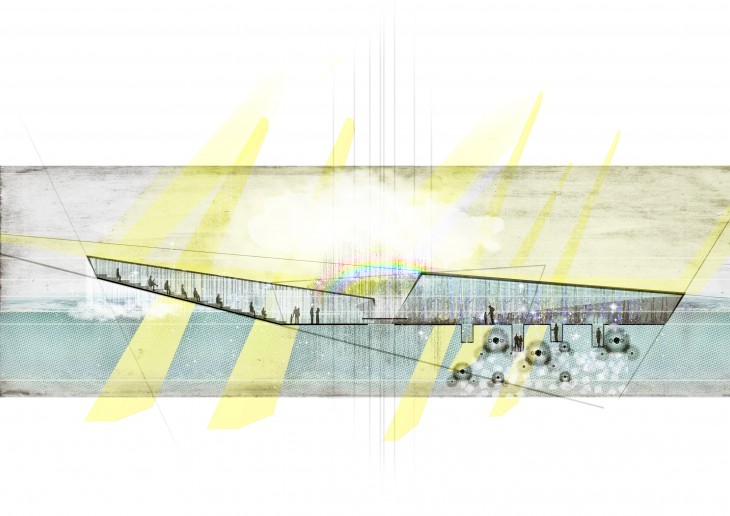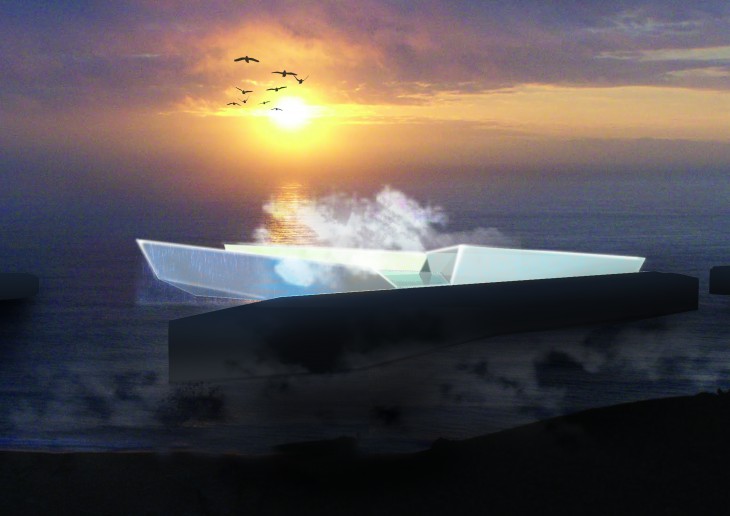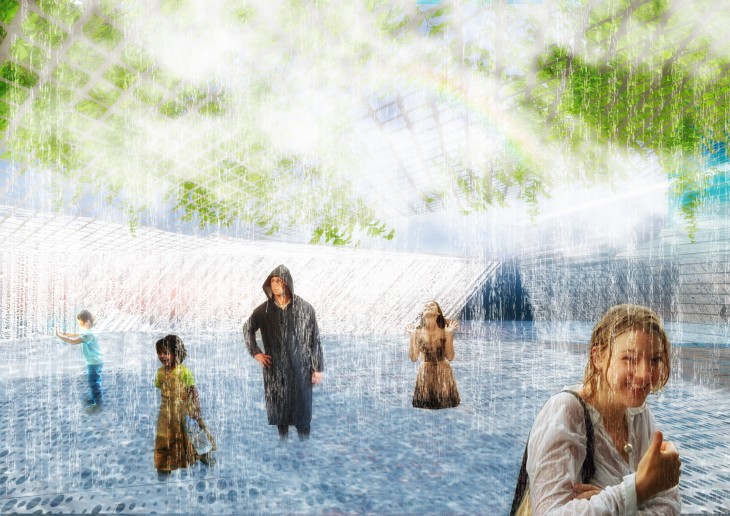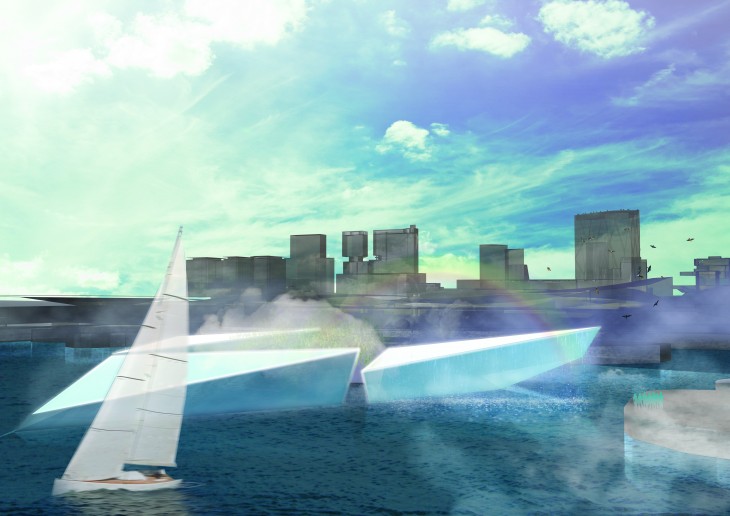The issue of water has long been disregarded. In a world facing serious water trouble, we cannot be blind to the forthcoming social and economical tensions over water. We propose unleashing holistic solutions in water managementand production through architecture as a means of communication. It is time to bridge the gap between water related problems and awareness. Our goal is a collaboration between experts, designers, municipalities and private companies dealing with water in order to elaborate feasible plan of action.
Why is water important?
The water-energy nexus is a term for the interrelation- ship of both water and energy. Excessive consumption of both can lead to resource depletion, pollution, and an overall increase in the price for each.
All types of electricity generation consume water either to process the raw materials used in the facility or fuel, constructing and maintaining the plant, or to just generate the electricity itself. Renewable power sources as photovoltaic solar and wind power, which require little water to produce energy, require water in processing the raw materials to build the turbines and solar panels. If a wind turbine is mounted on a concrete or steel tower, additional tonnes of water are required in the tower’s construction.
In the thermoelectric plant, about 7.6L of water is evaporated to create one kilowatt hour (kWh) of ener- gy.An average of 68 L of fresh water is evaporated to generate 1 kWh of electricity at a Hydroelectric plants. The production of electricity to power one 60W incandescent light bulb over the course of a year would evaporate about 24,000L of water.
As energy requires water, water supply and sewage disposal needs energy. Drinking water must be pumped to the treatment plant, pretreated, and then pumped to consumers. The energy consumed for pumping groundwater is typically between 537 kWh and 2,270 kWh per million gallons depending on pumping depth.
There are predictions that the need for water would double within 50 years, due to global population rise and climate change. Generally, about 1L of liquid water gets converted to water vapour to produce 1 calorie of food. Each person consume between 2,000 and 5,000 litres of water every day, depending on the diet and how the food is produced. This is far more than the 2 to 5 litres we drink every day. A heavy meat diet requires much more than a vegetarian diet, because water is used to grow food for the animals as well as being used directly to support the livestock. Economic growth fuels changes in diets; for example, per capita meat demand in China has quadrupled over the last 30 years, and milk and egg products are becoming increasingly popular in India. Growing cities, expanding industry and biofuels are increasingly competing with agriculture for water.
Why do we need #ECOTONE?
Freshwater
For nearly all human purposes, we need freshwater as it occurs on land. Salt water as it occurs in the ocean is not useful for drinking, washing, cooking, field irrigation or for most applications in industry. Salt water can be desalinised, but this is a costly and energy-intensive process, feasible for a limited number of applications only. Besides, salt water is available at the coast, while much of the water needs are inland, so that transport uphill becomes an issue as well. In short, humans mainly depend on freshwater as it occurs on land. Although water forms a cycle, so that freshwater on land is continuously replenished, its availability is not unlimited. Per year, people need a certain volume of water for domestic, agricultural and industrial purposes, which cannot exceed the annual replenishment rate. The major question is therefore: how much freshwater is available over a certain period and what is man’s actual appropriation of this flow in this period?
Freshwater is increasingly becoming a global resource, driven by growing international trade in water-intensive commodities. Apart from regional markets, there are also global markets for water-in- tensive goods such as crop and livestock products, natural fibres and bio-energy. As a result, use of water resources has become spatially disconnected from the consumers. This can be illustrated for the case of cotton. From field to end product, cotton passes through a number of distinct production stages with different impacts on water resources. These stages of production are often located in different places and final consumption can be in yet another place. For example, Malaysia does not grow cotton, but imports raw cotton from China, India and Pakistan for process- ing in the textile industry and exports cotton clothes to the European market. As a result, the impacts of consumption of a final cotton product on the globe’s water resources can only be found by looking at the supply chain and tracing the origins of the product.
Water, like energy, is neither created nor destroyed, but just changes its state of existence. The problems arise with the kind if usage and pollution which results in lack of availability of fresh water. The solution to the issue is more of adaptation which can be in different ways directing us towards sustainable solutions of water management. The solutions can be either Ecologically sustainable, Socially sustain- able or economically sustainable or a combination of them. and these sustainable solutions can be accomplished by adaptation to the the geography of the palace, the kind if water use patterns that socially exist and the economic standards of the society that we are catering to.
Water scarcity
Water scarcity is an increasingly frequent and worrying phenomenon that affects at least 11% of the Euro- pean population and 17% of EU territory. Since 1980, the number of droughts in Europe has increased, and they have become more severe, costing an estimated €100 billion over the past 30 years. One of the worst droughts occurred in 2003, when one-third of EU territory and over 100 million people were affected. Between 1976 and 2006, the number of people and areas hit by drought rose by almost 20%, and the yearly average cost has quadrupled. Demand for water continues to rise across Europe, putting a strain on our resources. It is estimated that some 20-40% of Europe’s available water is being wasted (leakages in the supply system, no water saving technologies installed, too much unnecessary irrigation, dripping taps etc.). In a ‘business as usual’ scenario, water consumption by the public, industry and agriculture would increase by 16% by 2030. And climate change will add to the problems of water scarcity and droughts.
Water footprint
A “water footprint” is an assessment of the amount of potable water used by an individual, community, business, or nation for outdoors irrigation and indoors. Through a Water footprint, one can learn how much water is consumed and by what. Action can then be taken to reduce water consumption from the activities with the highest impact. Low-flow aerators, toilets, and shower heads can be installed inside, while sustainable landscaping can be planted outside to reduce the need for irrigation. A Runoff footprint can be completed to assess how to sustainably reduce storm water runoff on a site, preventing it from entering the local storm water system and being treated at a waste water treatment plant.
Building resilience
This web of trade-offs and interdependencies shapes water outlook indirectly affecting even the food and energy demands and should be dealt with early and directly, rather than as an afterthought. The approach should be in searching and establishing localised solutions for water issues no as an after effect of addressing a crisis when it strikes but as a forethought. Human activities adversely affect ecosystem resilience and are increasingly causing regime shifts in ecosystems, often to less desirable and degraded conditions. Interdisciplinary discourse on resilience now includes consideration of the interactions of humans and ecosystems via socio-ecological systems, and the need for shift from the maximum sustainable yield paradigm to environmental management which aims to build ecological resilience through “resilience analysis, adaptive resource management, and adaptive governance”.
The site
The site: district 22@, also known as 22@Barcelona and Districte de la innovació (innovation district) is the corporative name given to a central business district in Barcelona’s formerly industrial area of Poblenou, in the district of Sant Martí, nick- named “the Catalan Manchester” in the 19th century. Its aim is to convert Poblenou into the city’s technological and innovation district, as well as to increase leisure and residential spaces.
The #ECOTONE tries to cross over the limitations of regular buildings. Attacking several issues of the site, the goal is to heal the urban socio-economical fabric. A place that not only acts as a learning hub for sustainability, but is able to build resilience and sustainability literacy. Our goal is a collaboration between experts,designers, municipalities and private companies dealing with water in order provide a platform where to elaborate a feasible plan of action.
The building
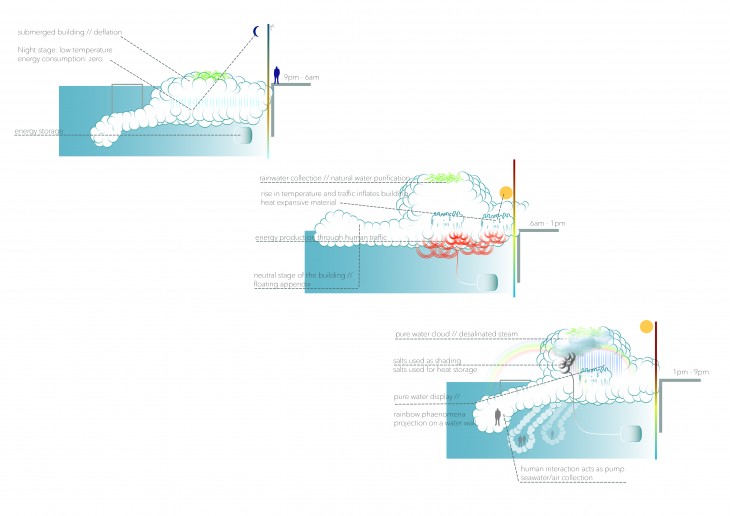 (above) – diagram showing the stages of the building -
(above) – diagram showing the stages of the building -
(above) -diagram of the skin-

(above) - using wave movement to fill the skin with seawater -
The #ECOTONE provides the platform for research and sustainability literacy, blurring the lines between the discoveries of science, the political decisions and the users behaviour and demands. Building resilience and raising awareness towards water issues is the first line of defence against future catastrophes.
(above) - cross section of the building-
(above) - view from the seashore -
 (above) - access to the building -
(above) - access to the building -

